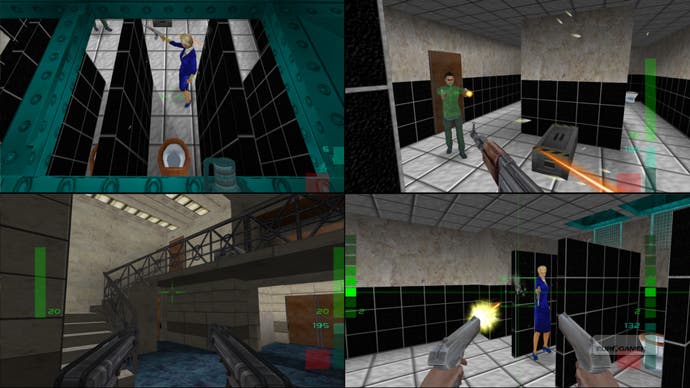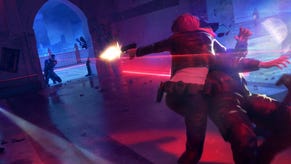Perfect Dark Review
Playing the old Joanna.
For the most part, however, this is still the same game it used to be, which is a mixed blessing. While Perfect Dark once seemed to have come from the future, it's now clearly a relic of the past. Like an archaeologist drilling into the earth, replaying Rare's classic will give you a few insights into how FPS games have changed over the years.
Signposting is perhaps the biggest thing I noticed. Games are now so much better at telling you where you should go next and what you should do when you get there. If you miss the sense of exploration and experimentation that a lot of the classics possessed just because their layouts were a bit confusing, this is the game for you.
Branching mission objectives, some of which are removed for the game's easier settings, means that plenty of rooms may have no obvious purpose depending on what difficulty you're playing on; even without that, Perfect Dark's not afraid to throw dead ends at you seemingly for the hell of it, or repeat textures so much in its huge maps that you can get a little dizzy.
DataDyne's own offices are particularly bad at this, featuring dozens of really quite similar rooms where security guards sit behind desks, tapping away at computers (still holding their guns, naturally), and the only way to tell whether you're retracing your steps or not is if there's blood on the walls. Modern games have made us stupid and impatient. Me, anyway.

Then there's aim assist. It was necessary for the N64, certainly, but can take a little getting used to on a 360 pad, particularly if you play the game on easy, where the tug from one target to the next is almost comically powerful. Gone on the harder settings, it's customisable, however - as with the original game, almost everything is - and on top of that, you can choose between a range of different control mappings, some based around Halo and Call of Duty 4 standards.
When you turn to multiplayer, you may realise that doors have been a casualty of virtual wars in the past few years, as online games move towards more open maps, and leave behind a world of endless corridors. Perfect Dark's still filled with doors - some of its arenas, particularly those based on the Carrington building, are practically door museums - and they add a not altogether welcome element of fiddliness to proceedings.
But multiplayer also reveals just how much of Perfect Dark hasn't passed its sell-by date: these battlefields are still devious and riddled with tactical options, the weapons are still brilliant fun to use, and Counter-Op, in which one player takes the role of Joanna while a second becomes all of the enemies, one by one, still feels ahead of its time even now.
With eight-player online games and four-player local split-screen (with each screen fully customisable), and with bot support, two-player co-op, and all the original game's modes available, it's a reminder of just how much content games used to come packed with - and that's before you take into account the fact that the single-player campaign has 17 missions, and most of them are pretty expansive.
Boasting gadgets and set-pieces that the more recent update struggled to improve upon, and multiplayer maps you probably wore ruts into the best part of a decade ago, this is an enviable chunk of nostalgia. Zero may have proved that it's hard to create a fitting sequel to a classic, but to see the original Perfect Dark slotting into place so well on XBLA is enough to suggest that, just sometimes, restoration might be a better solution than reinvention.








